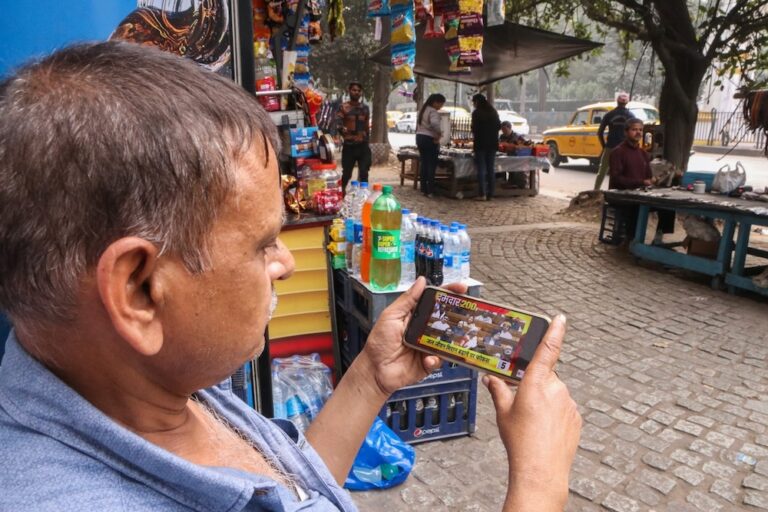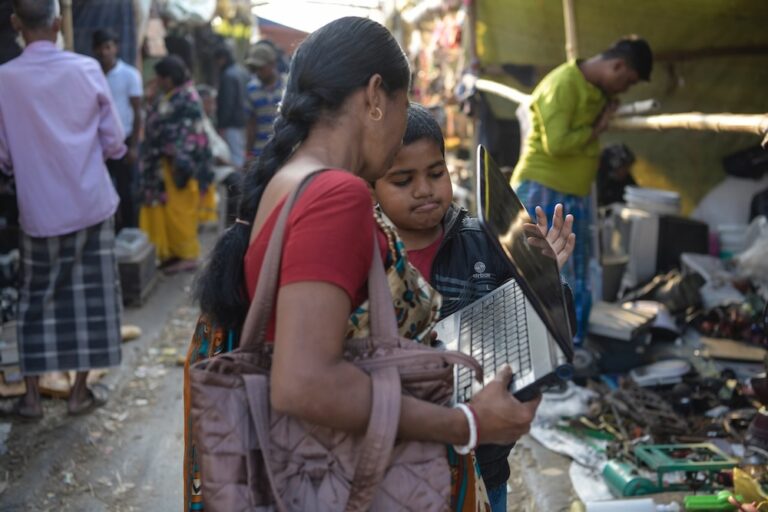Reporters Without Borders (RSF) has taken a closer look at the many kinds of prejudice and hostility to which women journalists in India are constantly exposed.
This statement was originally published on rsf.org on 7 May 2018.
After two events in the past month that shed light on the scale of sexist and misogynistic behaviour towards women journalists in India, Reporters Without Borders (RSF) has taken a closer look at the many kinds of prejudice and hostility to which they are constantly exposed.
One of the past month’s events was a terrifying online harassment campaign targeting the investigative journalist Rana Ayyub, which included calls for her to be gang-raped and the posting of porn videos with her head digitally superimposed over the heads of the actresses.
The other was a less scary but still revealing incident during a press conference by the governor of the southeastern state of Tamil Nadu. When a woman reporter, Lakshmi Subramanian, asked him a question about the Tamil Nadu’s university, his sole response was to pat her cheek.
The way the governor did this was so condescending that it sparked a major row on social networks and elicited this extraordinary comment from S.V. Shekher, the ruling Hindu nationalist BJP’s leader in Tamil Nadu: “Illiterate scoundrels are now in media, she [Subramanian] is not an exception to that. No one can become a reporter or news anchor without sleeping with some big shots.”
“Such an absolutely intolerable comment is typical of the battle that women journalists must constantly wage in India in order to practice their profession,” said Daniel Bastard, the head of RSF’s Asia-Pacific desk.
:They have fought with determination for decades to be accepted in newsrooms and then as reporters in the field, where they still often encounter behaviour that can at best be described as condescending paternalism and sometimes constitutes the most appalling misogynistic violence. All sectors of Indian society – including the public sector, employers and digital platforms – must take concrete measures to change this state of affairs and to allow women journalist to work with complete dignity.”
Prejudice
The prejudice to which women journalists are exposed begins before they even set foot in a newsroom.
“Journalism as a career choice is often seen as a risky venture,” said Rituparna Chatterjee, who helped found HuffPost India and now focuses on women’s rights and gender issues. “Parents fear that women who take up journalism will not be attractive in the ‘marriage market’ since typically such women are seen as ‘bold’ and opinionated. Women often leave the field after marriage, facing pressure from in-laws and husbands.”
Indian society’s opinion of women who espouse journalism instead of husbands can reveal itself in the most unexpected details. When Reader’s Digest India deputy editor Abha Srivastava wanted to rent an apartment in New Delhi, the landlady did not request evidence of how much she earned, as one would have expected. “She asked to speak with my father to get a list of ‘approved males who could come to visit me.’ This, when I was close to 40. The reason for such a demand? The fact that I was single and a journalist.”
This is a terrible combination for Indian women, it seems.
Pioneers
Women journalists obviously still encounter this kind of prejudice in the workplace even if attitudes are evolving. Prior to the 1960s, newsrooms were 100% male and the pioneers had to demonstrate a great deal of perseverance.
“They were gawked at and there was a lot of speculation as to how long they would survive in the taxing profession,” said Usha Rai, one of India’s first women journalists, in a survey by the Press Institute of India.
They had to fight in order not to be restricted to covering so-called “feminine” stories such as flower arrangement contests or sari shows. “I spent a long time trying to shrug off my gender,” said Barkha Dutt, a well-known journalist who worked for New Delhi TV for years and now often writes for the Washington Post.
“But after 22 years, here’s what I learned,” she told RSF. “I had to work twice as hard to get to the same place as my male colleagues. I had to fight for certain kinds of assignments, in particular, to cover wars and conflicts.”
Sexual assaults
Office relations sometimes get much more sordid. In 2013, a young woman journalist with the investigative magazine Tehelka described in detail how she was assaulted in a Goa hotel by her editor Tarun Tejpal. The magazine’s managing editor, Shoma Chaudhury, reacted by sending an email to her employees referring to an “untoward incident” that would be dealt with internally. The victim’s colleagues had to fight to get the case made public.
There have also been cases of sexual harassment in the field. After RSF reported a wave of police violence against journalists in March, a woman journalist reported that she had been groped by a police officer. And much more serious cases have been reported, such as that of the young photojournalist who was gang-raped in a Mumbai business district in 2013.
As elsewhere, the line separating verbal violence from physical violence is always very tenuous. This was seen in newspaper editor Gauri Lankesh’s murder outside her home in Bangalore last September. Like many women journalists in India, she had been the target of repeated online harassment.
“Presstitutes”
And like many other women journalists in India, she had been called a “presstitute,” an insult that is much used by the trolls associated with the right-wing Hindu nationalist movement from which Prime Minister Narendra Modi comes. Some politicians, including Minister of State for External Affairs V. K. Singh, also use this insult.
Swati Chaturvedi, an investigative reporter who has been the victim of online harassment, described in a book entitled “I am a troll” how Prime Minister Modi’s trolls use death threats and gang-rape calls to harass women journalists whose coverage of Modi or his party annoys them.
After Asianet News TV anchor Sindhu Suryakumar hosted a TV debate in 2016 in which references were made to a Hindu female deity, her phone number was posted on a WhatsApp group and she received more than 2,000 insulting phone calls and messages within the space of a few hours.
Fighting back
The trolls go so far as to publish the addresses of women journalists, making them fear for their lives. This is what happened to Rana Ayyub last month, prompting RSF to refer the case to the United Nations special rapporteur on extrajudicial, summary or arbitrary executions.
“I am used to hate and to the state creating trouble for me,” said Ayyub, who is well known for her investigative reporting in the book she wrote about Narendra Modi, which her friend, Gauri Lankesh, translated into the Kannada language before being murdered. “But this, what they have done to me now is a new low,” she told RSF. “And I have promised myself that I will take each one of them to court, I will fight back.”
India has fallen two places in RSF’s newly released 2018 World Press Freedom Index and is now ranked 138th out of 180 countries.



